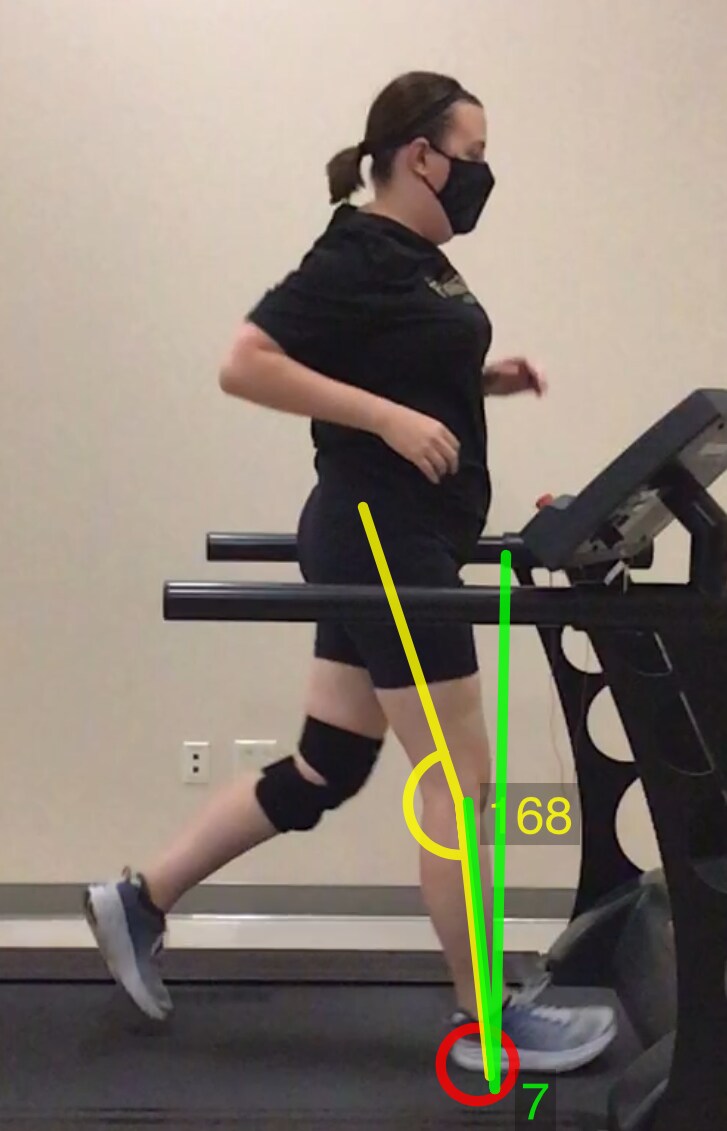On the run: Analyze this

Decreased knee flexion (my leg is too straight when I hit the ground)
The next step in my marathon journey was to undergo a video running analysis from the LMH Health RunStrong team. The motion analysis lab is housed within the therapy space at the West Campus, which has been open for just about a year now. While I wasn’t sure quite what I was walking into, I knew that I’d be in great hands.
I met with Nami Stone, rehab manager, and Zach Sanchez O’Neill, athletic trainer, for my analysis. Before I started any running, we sat down and talked about me. Nami asked when I started running, what injuries I’ve had, my training schedule, gear and what my goals are. In case you were wondering, my first 5K was in September 2011, I run 3-4 days per week and I’m a diehard Hoka One One fan. (My husband can attest to the love I have for my Hoka Cliftons. I may have more than a couple of pairs in my closet.)
Once we finished my history, it was time for an exam to help the team make some objective assessments about my strength and flexibility. There weren’t any significant findings about my posture, foot exam and ankle flexibility, but I didn’t escape unscathed. I previously shared that I had surgery in January 2020 to fix a herniated disc in my lower back and that’s left my right side a little weaker than my left. So when it came time for a manual muscle test for hip strength and a step down test, I wasn’t surprised that this was still the case.
Once the objective testing was done, it was time to hop on the treadmill. But this isn’t just any treadmill – it’s one with cameras and sensors – a bunch of bells and whistles that I don’t get when I’m running at the gym. Zach fired up the belt to 4.8 miles per hour (remember when I said I run pretty slowly?) and off I went!

Slight hip drop and collapsing ankles
Using the treadmill, the team was able to take photos of me from the side and back in a variety of phases, measure my cadence and look at my foot strike, among a whole host of other things. As soon as I was done, Zach downloaded the information he obtained and we sat down to look at the images and talk through the findings.
So what did I learn?
Well, I do some things pretty well and others, well – they need some work. First, the good! My strength in running is the lack of excessive bouncing, good hip extension when I push off and that I’m able to continue progressing my training program.
There are some things to work on too. I generally don’t share pictures of myself running, but I’ll make an exception here so you can see what I’m talking about. The analysis showed that my leg is too straight when I hit the ground, I have a slight hip drop and collapsing ankles. All of these are consistent with the team’s earlier objective findings of hip weakness. But good news! All of these can be addressed with strengthening and stability exercises.
Where do I go from here? Nami and Zach shared some exercises that I’ll do each day to build my hip stability and strength and keep following my training plan. I’ll check in with the team in a couple of weeks to see if it’s appropriate to progress my strengthening program and work on my cadence. (Did I mention that I’m at 149 steps per minute? That should really be a bit faster.) And I may get back into the lab in about six weeks to track my progress. In the meantime, onward and upward – it’s time for a run!

Get started today.
Trust the LMH Health RunStrong team to help improve your running experience.
Learn more